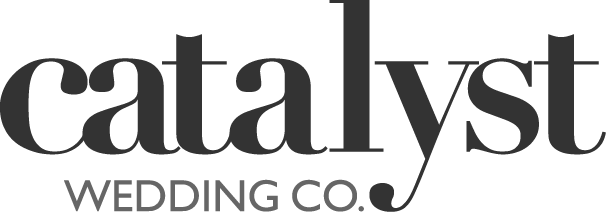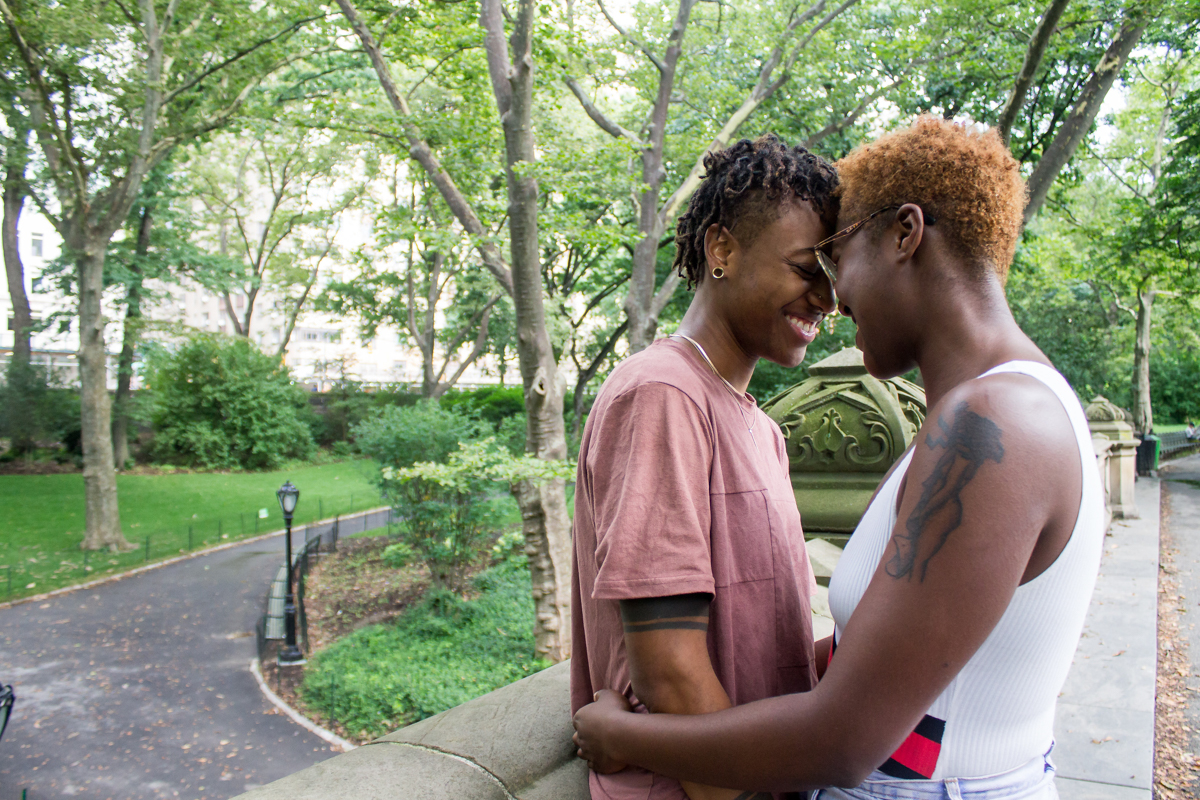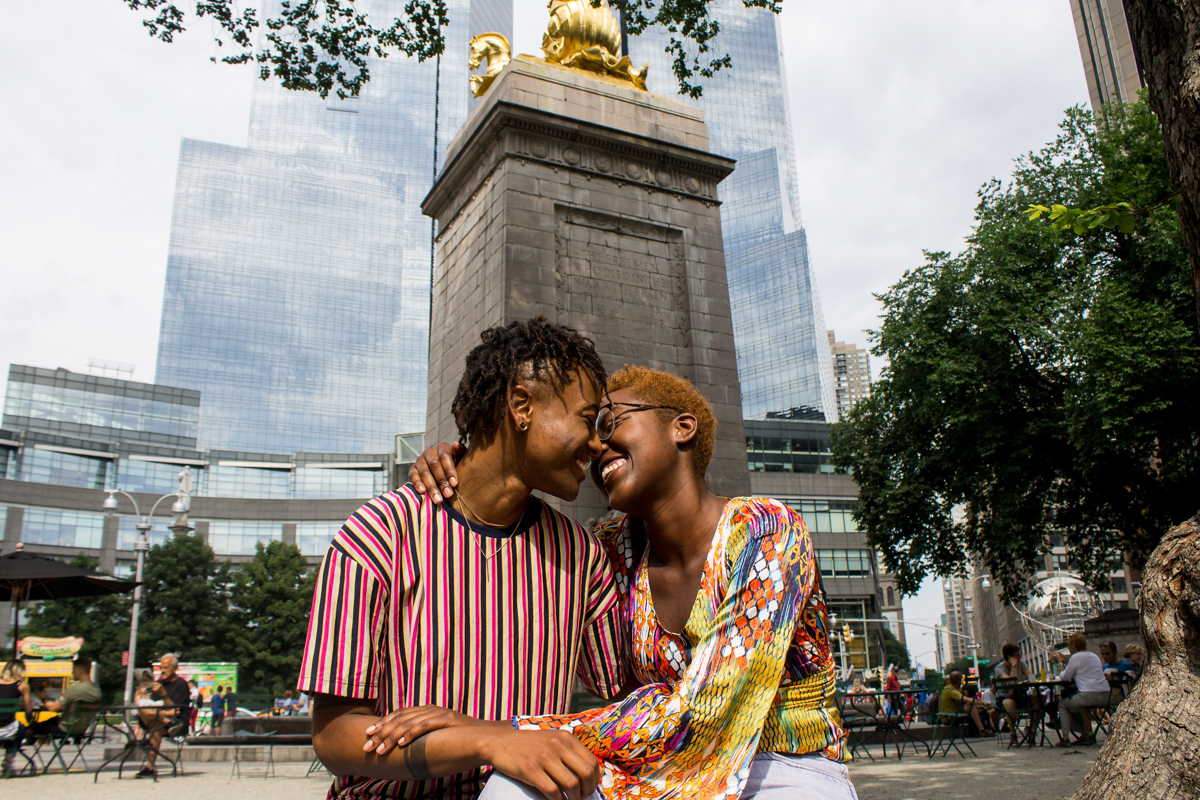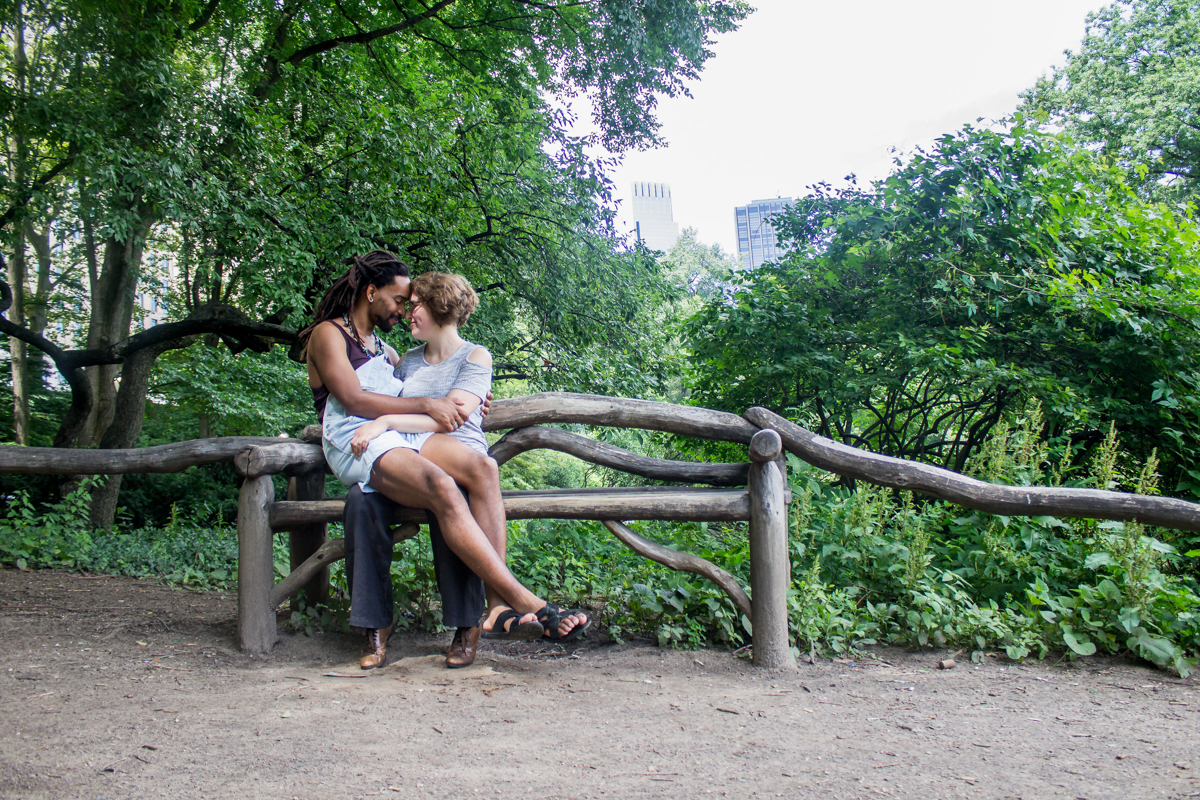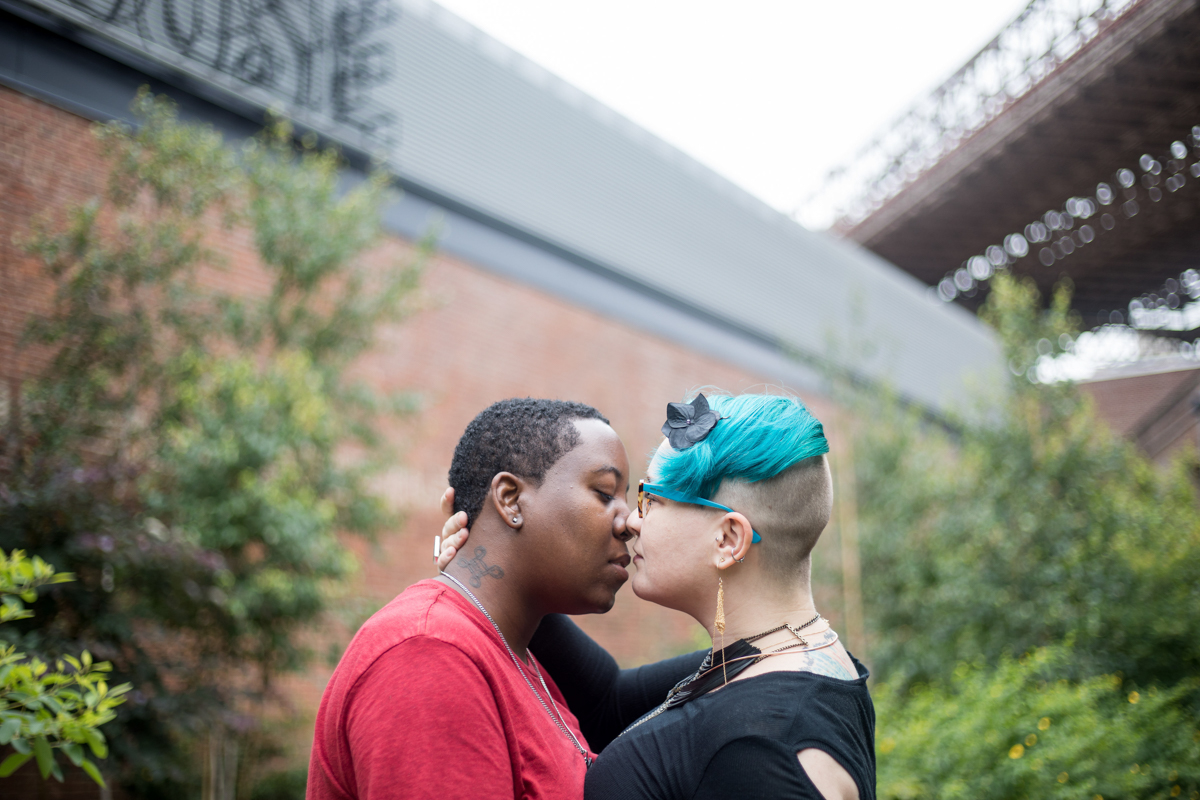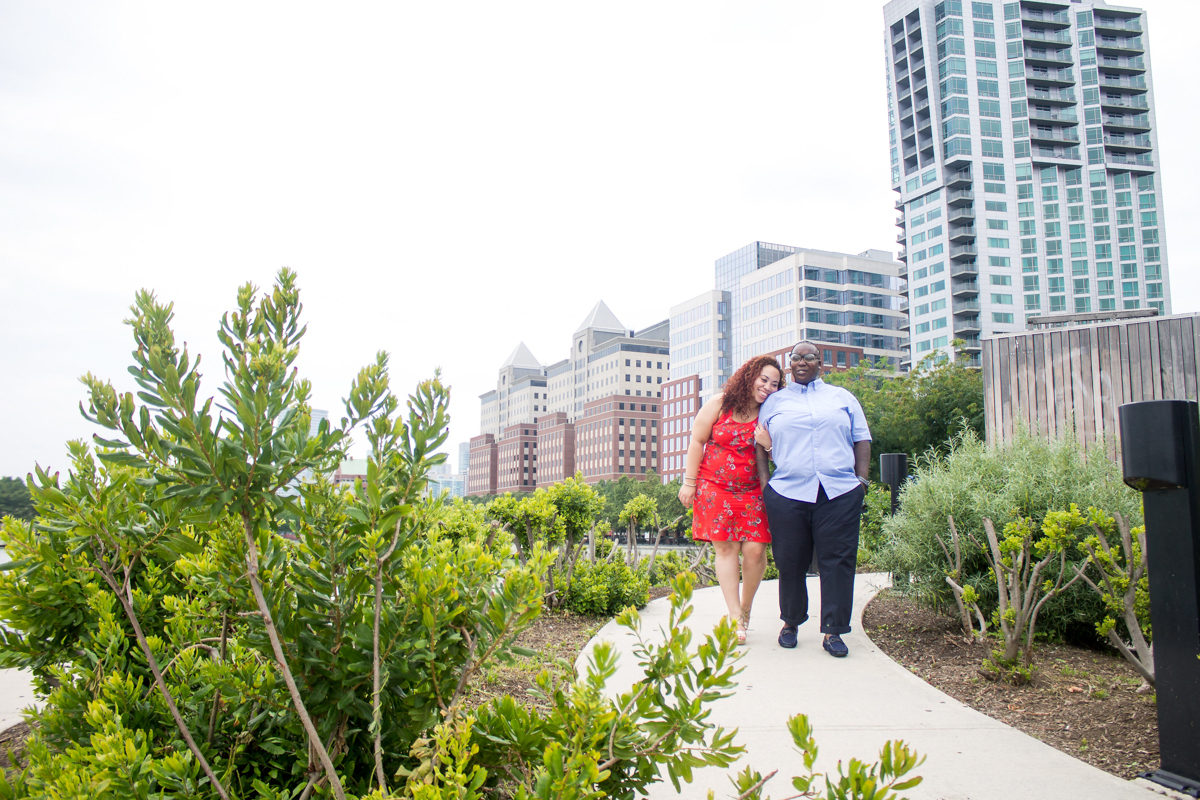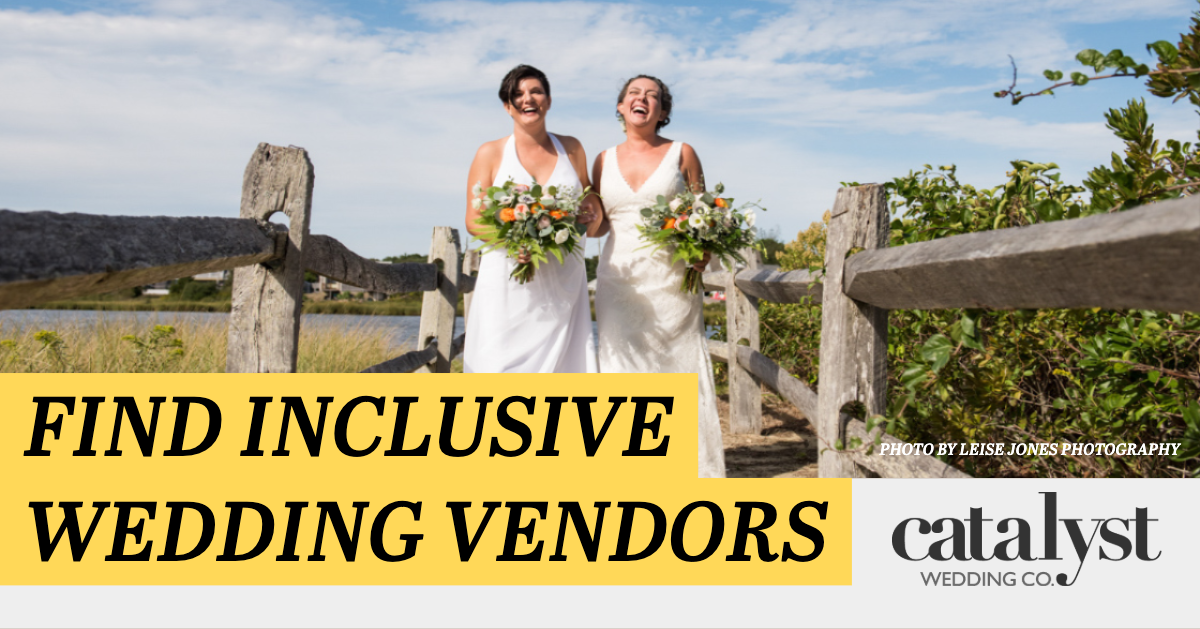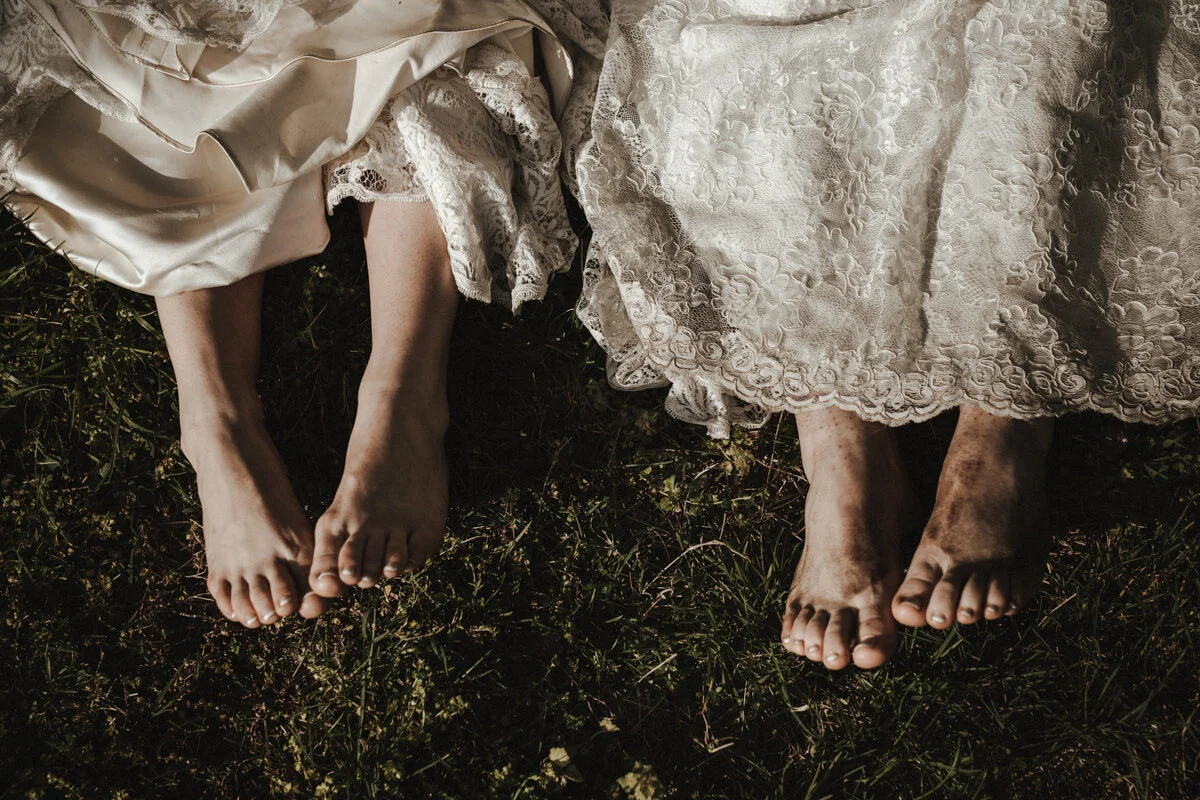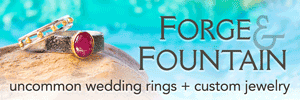"What Love Looks Like" // A Queer Photography Project by Debbie-jean Lemonte
/When Debbie-jean sent me photos from her project, I immediately knew that I wanted to feature the entire project rather than multiple photos from just one couple. I also got to interview her on the phone about her project and have included that here along with her artist statement.
- Amber Marlow
Artist statement:
Often times when we turn on the TV, listen to the radio, or sometimes skip through magazines, media shows us their version of what queer love looks like. The majority, if not all of those times, they get it wrong. They attach these destructive and toxic examples of what they think it embodies only to reinforce virulent notions heterosexuals believe exist. Why? They don't ask queer folks or individuals on the spectrum what their love looks like. They don't allow queer folks themselves to write these love stories, which are no different from anyone else's. This is why I started this project. As a queer woman of color, I wanted to show love in its truest form regardless of presentation and identity. Looking at the gallery, you can't tell who's GNC, trans, or lesbian/gay/bi-sexual because love is exactly that. It's not obvious. It doesn't define you, your sexuality, or your identity. Love is to be taken at face value; a bond between two individuals who just get each other.
Amber Marlow: Why this project?
Debbie-jean Lemonte: As someone who identifies as queer, there’s a stigma that the media pushes as to what queer looks like. I wanted to show that queer can take on different forms, not just, say, a femme presenting confused bisexual, or the “undercover brother” with a wife, kids, and gay sidepiece. Queer can look many different ways, and sometimes it’s not even easy to tell who is non-binary or gender non-conforming. Queer love is multi-faceted and should be shown for what it is: just love. I’m tired of the concept the perverted thing people think it is. Queer people have the same love as everyone else.
AM: How did you do your model call? Are these friends?
D-j L: Surprisingly, they’re all random strangers. I reached out to my queer communities, and got a lot of responses. I selected the first fifteen I could find that sounded like a good fit. We had a phone call first just like I do when I consult with my wedding clients, to get a sense of who they are, where they came from, and how they met.
On the days of our shoots, the process was seamless. I think because we are all part of the same community, they felt like friends by the time we met.
AM: How did you pick your locations?
D-j L: They chose the locations, based on what they were familiar with, or what was significant for them. As queer people, when we shoot, we tend to be more aware of our surroundings. We wanted to be in a public space that felt safe, so that when they were intimate, whether it was holding hands or kissing, they wouldn’t feel uncomfortable or like they were being threatened.
Another factor is that everyone knows the location we shot in: Central Park and the Brooklyn Bridge Park. It showed that any other couple they could go to these places — instead of a hidden place.
AM: What should readers know about you?
D-j L: I’m all inclusive. It doesn’t matter what your gender identity or sexuality is. For me, if you’re a decent person looking for my level of professional service, you don’t have to worry about me questioning who you are. I think many photographers say they’re inclusive, and then they get a gay wedding and they don’t know what to do or how to act. Ask questions, yes, to learn what’s offensive and not offensive. Understand ableist language.
Even as a person of color I still work on it, so I’m not going to pretend that I’m perfect, but when you have professionals that aren’t even taking the time to understand how certain words can affect the people they’re working with, it’s a problem. We have to be mindful.
Photos by DAG Images
DEBBIE-JEAN LEMONTE
Debbie-jean Lemonte is a Lifestyle Photographer, Digital Content Creator, and Writer, who advocates for People of Color + the LGBTQI community through her art and through public speaking opportunities. After graduating with a degree in Dance and Psychology, she focused her passion for both studies and infused it with her art, using it as a therapy for individuals who’ve suffered emotional/mental trauma. Her photography has been featured in GQ Report, Timberland, Huffington Post, DapperQ, Go Magazine, Refinery29, BuzzFeed, Mic, to name a few. Her photography series, We Are Queens, has been recently featured on renown site, ForHarriet, receiving various praises for its inspiration to women of color. Debbie’s enthusiasm for inciting ingenuity is a combination of fashion, media, art, and travel.
